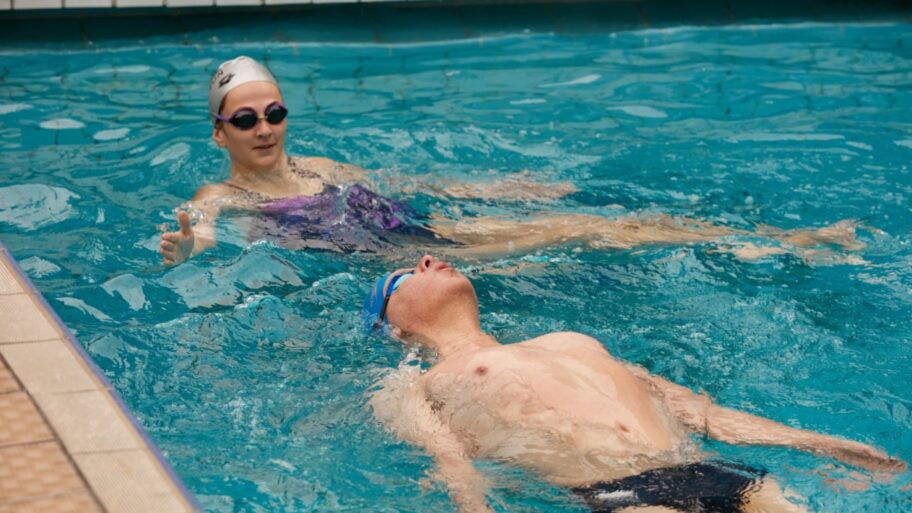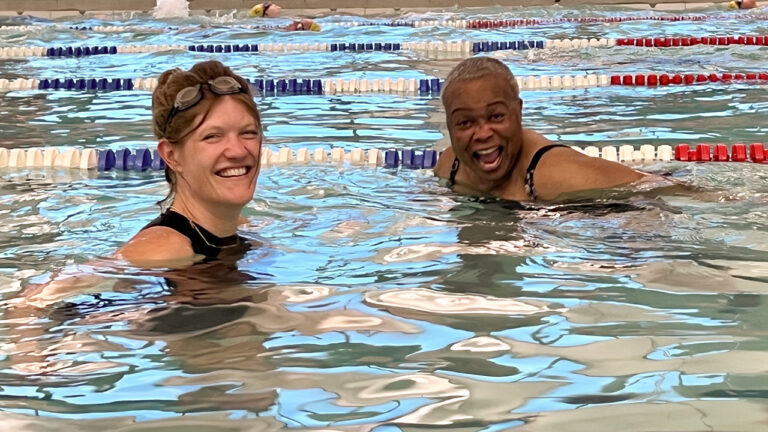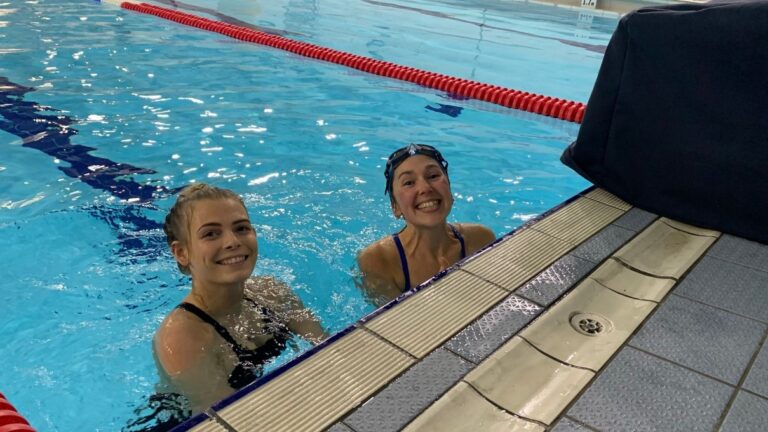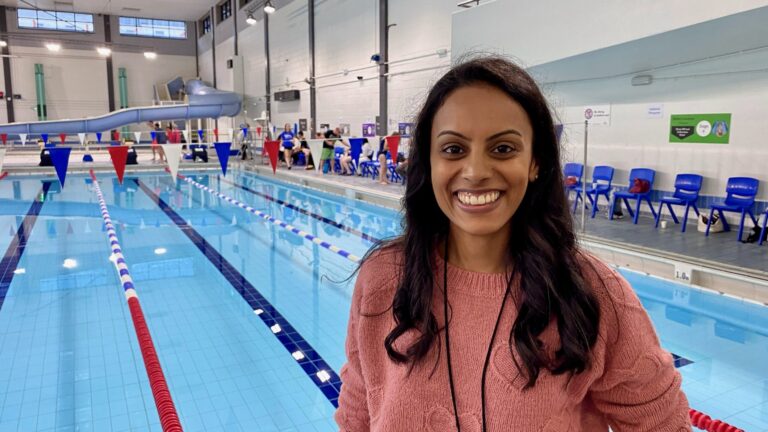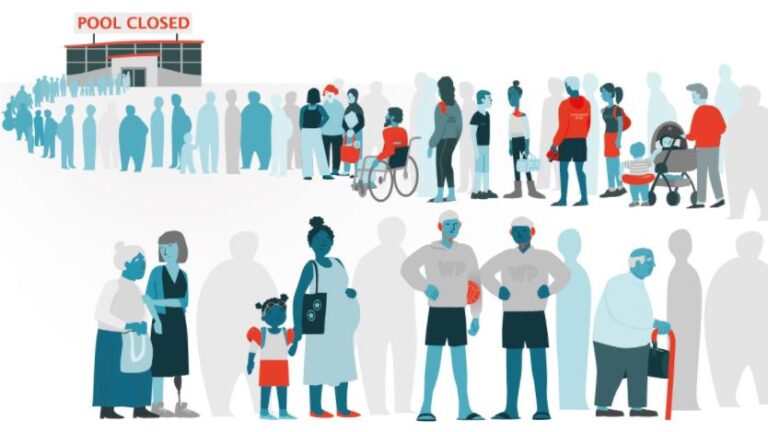Being confident in the water is one thing but supporting a disabled swimmer is a totally different experience. It’s normal for volunteers to have a bit of apprehension. Whether you are a new volunteer or simply need a refresher after a year without swimming, read on our five tactics to work with disabled swimmers in a pool.
Assess the Person’s Swimming Skills
If you have never worked with the swimmer before, it’s helpful to have a conversation about their abilities and preferences first. Simply be open and honest and ask them what they usually do in the water. You may then want to see them in action by asking them to do a few exercises like breathing, leg drills or buoyancy. If they don’t feel comfortable in the water, remember that safety comes first and you might want to consider buoyancy aids to keep the swimmer afloat.
If they need support, a swim belt or woggle can be used or you can support them with your hands. Be aware that buoyancy aids do restrict movement, give a false sense of balance and prevent swimmers from learning stability though. If you are aiming to progress, use them in the short term but regularly change the type of buoyancy aid or deflate a bit of the air to provide less support.
Communicate Effectively
Thoughtful communication is the secret to every excellent volunteer. For many disabilities, speaking clearly, slowly, distinctly, but naturally, without shouting or exaggerating mouth movements helps you to be understood. This applies to people with hearing impairment, learning disabilities and people with English as a second language. Communication may need to be adapted further to an individual but these are important basics. Communication is extremely important when working with a visually impaired swimmer for instance and we have some tips about guiding with visually-impaired swimmers and my story of swimming with Ramin if you want to learn more.
As well as being understood, we need to engage people’s interest. For some, this may be through play and other forms of learning – visual, auditory or kinesthetic communication methods can help. Be open and flexible, and don’t get upset if you have to repeat the instructions: some individuals with light epilepsy, for instance, may have absences for a few seconds but that doesn’t mean they are not listening voluntarily.
Adapt the Level of Exercise
Independently of the swimming skills of the person, whether they can swim multiple lengths or play in the water, it’s important to respect their physical abilities. For instance, individuals who have asthma may need more time to get their breathing back to normal between the different exercises. Swimmers with diabetes should avoid burning up their energy and ensure they have had the right amount of food before the session. For people with heart conditions, make sure they don’t overdo it so that they don’t get too tired. As always when swimming with people with disability, communication is key and as a volunteer, you could check with the swimmer to make the session stimulating but enjoyable and safe.
Adapt Your Support in the Water
There are lots of ways you can position yourself in the water to help a disabled swimmer so that it’s safe for you and for them. Gentle hand support under their shoulder blades is a good starting point for many swimmers. Sometimes you need to be mindful of safety: for example, people with cerebral palsy may have reduced muscle power and increased muscle tone which causes stiff flexed limbs and difficulty in breathing. This can result in uncontrolled and uncoordinated movements but also balance, speech and possibly learning difficulties. Whilst swimming can help them relax muscles in the water, you might want to support them from a position in which they are less likely to hit you involuntarily. Swimmers with paraplegia have a motor and sensory loss so as a volunteer you need to ensure their paralysed limbs do not get trapped on hard surfaces when you are helping them.
Know How to React
Whether you are a new volunteer or a regular one, you may encounter situations you have never experienced before. For instance, some serious forms of epilepsy can cause fits (seizures). Do not panic but talk calmly instead because the person may be able to hear you. Ensure their head is supported above the water and with nothing in their mouth, while not restraining them as they could be moving very strongly. Always know there is help around, and call to others to support you.
Overall, as a volunteer, remember that what seems to you like a simple task may be a major achievement for an individual with a disability and take several weeks to achieve. As highlighted in our blog about disability swimming by Swim England, it’s important to focus on the person’s abilities and to set realistic goals. Would you like to learn more about how to support swimmers with a particular disability? Let us know in the comment and we could write a blog post about this topic.
